Guest Post by: Shawn Kendrick
Does your website perform up to its potential in terms of bringing in volunteers and donations?
Consider these statistics:
According to Google, each month there are 368,000 searches for the term “nonprofit organizations” in the United States. The phrase “volunteer opportunities” yields 201,000 searches a month. There are 5400 searches a month for people looking for “charities to donate to.”
Even when you narrow the searches geographically, the results are still impressive. For instance, the term “volunteer Cleveland” yields 2900 searches a month, while “volunteer opportunities in Chicago” produces 5400. Clearly folks are using the internet to find organizations worthy of their time and money. But is your website working hard enough to get in front of them — and is it converting viewers into donors and volunteers?
Know where you stand
Before you do anything else, evaluate your website’s current effectiveness by tracking the traffic it’s seeing. Without establishing some benchmarks, you simply won’t know where to start. Most reputable hosting providers include some sort of stats tracking program. Many use AWStats, a great program that gives details such as unique viewers, total visits, and hit totals. With this plug-in, you can also see what days and times your site is generating most of its traffic. In addition, you’ll know which searches and external links are sending visitors your way. If your provider doesn’t offer this program, ask. It’s free and should be very easy for them to install. If you want to go the do-it-yourself route, then check out Google Analytics. Just cut and paste the code into your site, and this program will give you all of the above features and more. Like most things Google offers, it’s free and high quality.
Is the traffic there?
Now you can make a judgment as to how you want to handle your scenario. If you find that you aren’t getting much traffic, then the next course of action would be to promote your website more heavily. Make sure your URL is on all marketing materials, email signatures, business cards, blogs, newsletters, et cetera. You may also want to consider having the site optimized for the search engines. This process of basing your site’s text and HTML code on keywords works best if performed by a professional. However, it’s often worth the price of admission, since optimization can move your site up search engine rankings very quickly.
Focus on the bottom line
If you see that you’re getting a good amount of traffic, it’s time to focus on your actual conversion rate. In the business world, the most important statistic is the percentage of traffic that resulted in a sale. If you had 1000 visitors and 10 of them bought something, then you are at one percent. Of course, nonprofits aren’t selling products, but you could easily set up other indicators, such as the percentage of visitors who made a donation or signed up for a volunteer opportunity. To a lesser degree, quantifying how many visitors signed up for a newsletter or requested more information as a percent would also have some merit.
What is an acceptable conversion rate? That’s a tough question to answer. In business, most direct mail yields a conversion rate between one and three percent. Some internet marketers feel this is a fair goal for a website, too, while others contend that it should be closer to the 10 percent mark. For nonprofits it may be wise to work the equation backward. For instance, if all the associated costs for your website is $100 a month, and we know a volunteer’s time is worth $20 an hour and the typical volunteer puts in 2 hours a month, then getting three volunteers a month would put you $20 on the plus side.
Be open to change
If you find that you aren’t reaching your conversion goals despite having enough traffic, you may need to take a look a critical look at your site. Make sure the website design looks professional. People want to help out organizations that appear to have their house in order. A shoddy-looking website gives the appearance that corners are being cut. And if you want someone to donate or volunteer, say so. Don’t be shy. Place your call to action prominently on the front page. Moreover, don’t trust that viewers will navigate their way to signing up for anything. Instead, put a link or button right there on the front page that leads them immediately to registering for a volunteer opportunity or donating to your cause. Last, but certainly not least, also make sure contact information is prevalent and easy to locate.
The internet is a powerful way to market your organization, so capitalize on getting the most out of your online presence. The most direct path to getting a good conversion rate is to create a site that is attractive, easily found on the internet, and user-friendly. These three pieces provide a solid foundation for the final and key ingredient: the prominent display of buttons or links that seamlessly guide users toward your goal… getting them actively involved with your mission.
——————
For more resources, see our Library topics Marketing and Social Networking.
——————
ABOUT Shawn Kendrick
Shawn Kendrick writes for VolunteerHub.com and holds an MBA from Ohio Dominican University. VolunteerHub is a cloud-based software that enables online volunteer management. The software helps nonprofit organizations to simplify the entire volunteer management process, including scheduling, registration, hour tracking, and recruitment. Nonprofit organizations can try VolunteerHub for free for 30 days by visiting: http://www.volunteerhub.com/free-trial
 Peace is every step throughout our day. Peace is not a place outside us, it is within us. Your thoughts, words and deeds create peace or strife. Regardless of the work you accomplish, you bring your being-ness to each situation. Peace at work is created by your presence. How you show up at work is up to you.
Peace is every step throughout our day. Peace is not a place outside us, it is within us. Your thoughts, words and deeds create peace or strife. Regardless of the work you accomplish, you bring your being-ness to each situation. Peace at work is created by your presence. How you show up at work is up to you.


